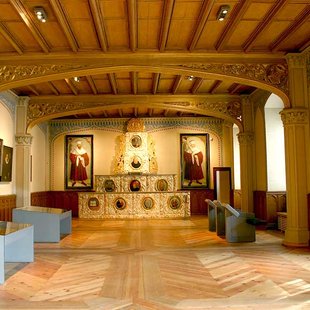
The history of the house
Luther House was built in 1504 as an Augustinian monastery. Known at the time as the "Black Monastery," the name alluded to the cowl color of the Augustinian monks. Martin Luther also lived here as a monk from 1508. In the course of the Reformation, the monastery was dissolved. Luther was given the house in 1532 and lived there with his family and his wife Katharina von Bora. After Luther's death, the University of Leucorea took over the building and converted it into a scholarship house.
The front house, built in the mid-1580s, was named the Augusteum in memory of the university's patron, August I of Saxony. In 1844, the Luther House was thoroughly renovated by Friedrich August Stüler over a period of 40 years. Until 1937, the first floor of the house housed a Luther school, and in 1883 the first rooms were used for museum purposes. Today, the Augusteum of the Leucorea is used as the central location of the Luther Memorials Foundation for the presentation of special exhibitions. The Luther House has been a UNESCO World Heritage Site since 1996.
Open map
We would like to point out that when you activate the map, data is transmitted to the provider Google.
April - October
Monday-Sunday: 09.00 am - 06.00 pm
November - March
Monday: closed
Tuesday-Sunday: 10.00 am - 05.00 pm
Due to renovation work, the Luther House is expected to be closed from November 2023 to April 2025. During this time, selected pieces from the Luther House will be exhibited in the neighboring Augusteum.




